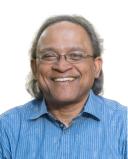Introversion
Susan Cain’s Quiet: Is Asian American Silence “Golden”?
QUIET plays on stereotypes of Asians, potentially causing harm not understanding
Posted June 27, 2014

June 27, 2014
In my earlier blog post, I praised and critiqued Susan Cain’s bestseller QUIET: THE POWER OF INTROVERTS IN A WORLD THAT WON’T STOP TALKING. But one chapter especially stuck in my craw. Soft Power: Asian-Americans* and the Extrovert Ideal falls short of the understanding, validation, and broad-minded sensitivity which Cain champions. While she says “I don’t want to encourage rigid national or ethnic typecasting,” she does just that, because, as she writes, “there are too many aspects of Asian cultural and personality style that the world could learn from.” Uh-oh. It’s a setup for idealization, essentializing and stereotyping, and thus harmful for understanding Asians and Asian Americans. Cain becomes complicit in silencing Asian Americans, rather than giving them a voice. Moreover, she confuses familial, spiritual and communal values with “personality style”, in an attempt to validate introversion, the subject of her cultural project. God bless Introversion – but please let us Asian Americans figure out how best to work out our ethnic identities however we’d like. Silence, in my experience, can either be “golden” and a sign of measured calm and unflappability; or it can be forced, and a measure of oppression and being caught in complex double binds. Anger and being outspoken, not silence, can cut the Gordian knots of racism/sexism/homophobia/marginalization, the umbilical cords of difficult family situations, and the confusion of coming to know oneself in a society that seems to like us “unseen and unheard”.
Cain begins this section by interviewing an Asian American then-public high school student in Cupertino, California. Mike talks about how he and his classmates value studying and honoring family wishes. They are more into chess club than “extroverted” activities like football. Studiousness and education are most prized in this school of children of immigrants and professionals. It’s hard work over the usual teenage pressures of social life. When he gets to college, he admits that being around more outgoing and disinhibited people makes him feel confused and inadequate, saying “sometimes I feel like they’re better than I am.” But still he bends towards the serious, withdrawn, and philosophical style: “it’s hard to be gleeful when at the same time I’m trying to be wise.” Here, there’s a genuine conflict about identity. A successful style of coping with parental expectations and educational demands has come up against the more personal desires of intimacy, relationship and personal expression. There’s no absolute right or wrong way to be, of course, but Cain uses this example and others to build a case for the “better” way of introversion, which she associates with conviction, superior interpersonal strategy and even moral righteousness through the example of Gandhi, who many of the high school students she interviewed praised. She emphasizes Gandhi’s early restraint at picking his battles. The battle that Cain ignores is that of Asian American assimilation vs. assertion. The “keep your head down and don’t make trouble” – in family or in school – vs. the need to speak up. No wonder Gandhi is idolized by these teens: he embodies spiritual strength and moral resolve. Perhaps they are in some way silently biding their time until they can make their stands. Oddly, Cain downplays Gandhi’s resistance, and the spiritual and moral sides of his struggle, while emphasizing his willingness to bend to the will of a more powerful authority when he had a greater goal in mind. To whose will are these young Asian Americans bending? When will their own will, individual and collective, be amplified? And to what end? I’m interested in these questions – but Cain sidesteps the issue.
Another high school student, Tiffany, values her introversion, and is intent on not socializing because “I have to study”. Here, family honor and ‘face’, as well as the belief that socializing is a distraction from achievement, cause a potential identity conflict. We see later that Tiffany has adjusted and done well in college, becoming Editor of her college newspaper, but one has to wonder whether there’s a personal cost to women like her. Asian American girls and women aged 15-24 have the second highest suicide rate of all ethnic groups, behind Alaskan Native Americans. Asian Americans suffer from higher rates of depression and anxiety. Some of this has been tied to the pressures of high family expectations and concurrent devaluation of Asian American women. Silence, if it means silencing, kills.
Cain goes on to use a third Asian American, Harvard B-school student Don, and his “assorted roommate problems” (as Hyphen Magazine blogger Jenny Lee put it last year) as an example of supposed Asian ‘relationship-honouring’ style. Don was annoyed with his white roommate who voiced dissatisfaction with the dishes piling up in the sink. “An Asian in that situation, said Don, would be more careful with his tone of voice. He would phrase his displeasure in the form of a question, not a request or command. Or he might not bring it up at all. It wouldn’t be worth upsetting the group over a few dirty dishes.” Gee, I wonder if Don’s mom ever told him to clean up after himself, and if she was “relationship-honouring” about it? How “relationship-honouring” is it to not clean up after yourself in the first place? Valuing relationships would seem to mean valuing others’ perspectives, and being able to acknowledge fault – not in going ballistic when someone disagrees with you or points out a problem. I imagine that the roommate’s anger built up over some amount of time. It’s just plain weird that Cain follows this example with Hiroshima bombing victims apologizing to each other in a show of (unnamed) survivor guilt. Would that Don and his roommates had just apologized for being slobs and gotten over it. Here, I also wonder at the potential costs of interethnic strife and underlying shame and feelings of inferiority. Perhaps Don felt shamed and thus angered by his roommate, and thus found a way to make the roommate “wrong” and reclaim his “superiority”. Or that the Asian American roommates essentially ostracized their white roommate. It’s all a bit more complicated than Cain sees it.
And how can you value “not socializing” and “relationship-honouring” back-to-back? How can you value Asian “harmony” and Gandhian revolution simultaneously? I’m confused.
Cain also ignores a cultural context that might make “quiet styles” more reliable ways of relating in Asia. This cultural context is not present in American society – thus challenging Asian tradition. Asian philosophical traditions for millennia have called for cultivation of spiritual and communal strength. Confucianism, Buddhism and Taoism, more than “introversion” – are interwoven into Asian culture. Moreover, Cain’s trumpeting of largely Confucian hierarchical values (study, relationship-honouring) ignores the necessary counterpoints of the other Asian philosophies that allow for more individual expression and development. Buddha seems to be the ideal example of balancing introversion and extroversion. “Better than he who conquers a thousand armies is he who conquers himself” and “be a lamp unto yourself,” said the Buddha – and yet he founded a progressive, inclusive religion and community that continues to thrive 2,500 years later.
Cain points out that “Chinese children who are sensitive and reticent are said to be dongzhi (understanding), a common term of praise” (p 187), and thus valued in China. But what does donghzi have to do with, say, Ai Wei Wei or any dissident? Again, I think the cultivation of creativity, compassion and wisdom have more to do with character than the prizing of introversion in and of itself. What grows out of introspection and observation matter most.
In summary, Cain’s broad, single-toned strokes are potentially damaging, especially to young Asian Americans struggling to find and assert their identities. Cain points out that Chinese American self esteem takes a nose-dive in the teens, but blames it on the clash of introversion-meeting-extroversion rather than on encounters with racism. Asian American teens are the most bullied of all ethnicities. Reinforcing an “ideal” of quiet “soft power” in the face of this abuse borders on journalistic malpractice, in my view, or at the very least a blatant disregard of the realities Asian Americans face every day, from microaggressions to outright hostility and violence. I am all in favor of honoring sensitivity, empathy, introspection and conviction. However, we should not do so by being insensitive and unempathic to the dangers of stereotyping Asian Americans and potentially contributing to their silencing.
Silence may be golden to some. But so is a roar.
* Another beef is that Cain hyphenates “Asian American” throughout this chapter. Hyphenation is generally agreed by ethnic minorities to be derogatory, as it implies both a split identity and a qualified type of American – a so-called “Hyphenated American”. African American, Italian American, etc are not hyphenated – why Asian American? I realize that the NYT and other journalistic stylebooks have not caught on yet, but I wish Cain and her editors had considered this more carefully.
Also be sure to read/revisit Wesley Yang's 2011 article on Asian American identity in NYMag.
© 2014 Ravi Chandra, M.D. All rights reserved.
Occasional Newsletter to find out about my new book on the psychology of social networks through a Buddhist lens, Facebuddha: Transcendence in the Age of Social Networks: www.RaviChandraMD.com
Private Practice: www.sfpsychiatry.com
Twitter: @going2peace http://www.twitter.com/going2peace
Facebook: Sangha Francisco-The Pacific Heart http://www.facebook.com/sanghafrancisco
For info on books and books in progress, see here https://www.psychologytoday.com/experts/ravi-chandra-md and www.RaviChandraMD.com


